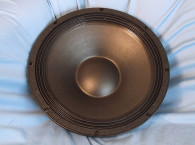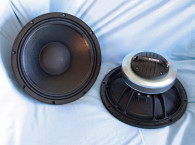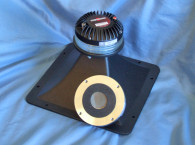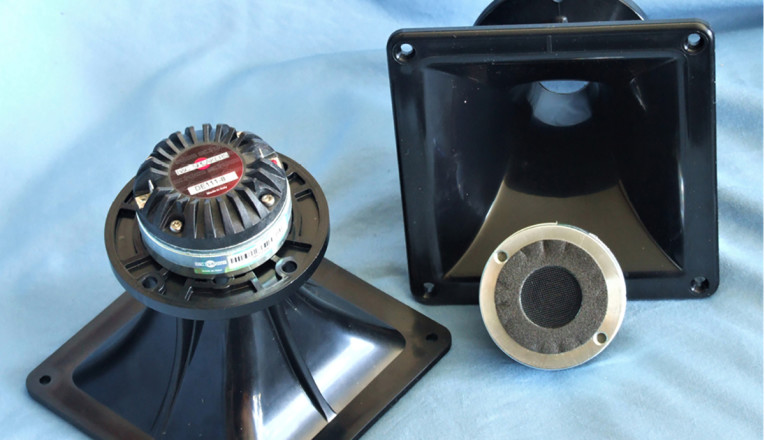
The DE111 is a new variant of the DE110, offering a lower crossover frequency of 1.2kHz with its updated Ketone polymer suspension and dome. This compact 60mm diameter compression driver has a 2.83V/1m 107dB sensitivity and 50W continuous power handling making this tiny driver universally applicable for a variety of small monitor and PA applications. This also makes the DE111-8 an ideal candidate for the new generation of lighter, more compact line array loudspeakers.
The horn supplied for use with the DE111-8 by B&C Speakers was the ME10v2. This Hyperbolic Cosine flare horn has a 1” exit bolt on type made from injection-molded ABS, and provides a 90° x 60° coverage pattern and a 1500Hz cut-off frequency, making it a good match for the DE111-8 compression driver. Figure 1 and Figure 2 give the horizontal and vertical directivity maps for the ME10v2, while Figure 3 and Figure 4 display the horizontal and vertical polar plots. However, it should be noted that the bolt pattern of the ME10v2 does not fit the DE111 and has to be modified (new bolt holes drilled into the mounting plate), which is what I did for this explication. However, if you are buying OEM quantities of the DE111/ME10v2, I’m quite certain B&C Speakers can accommodate this issue.
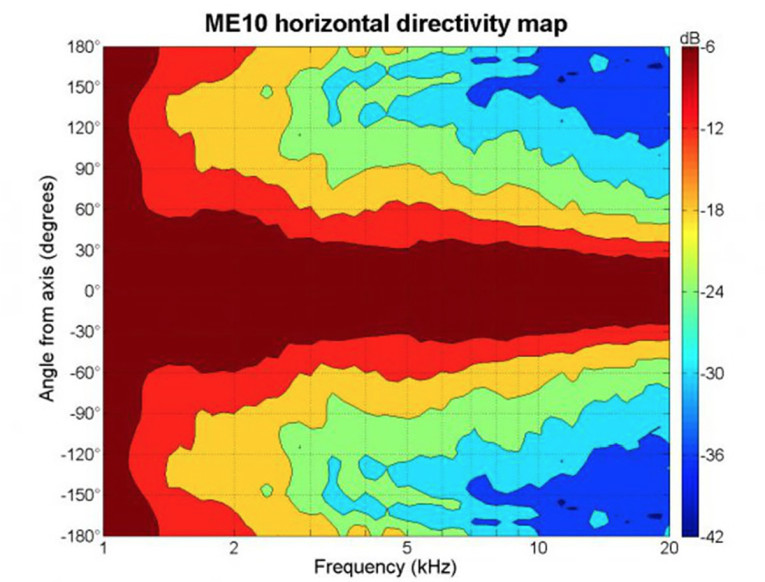
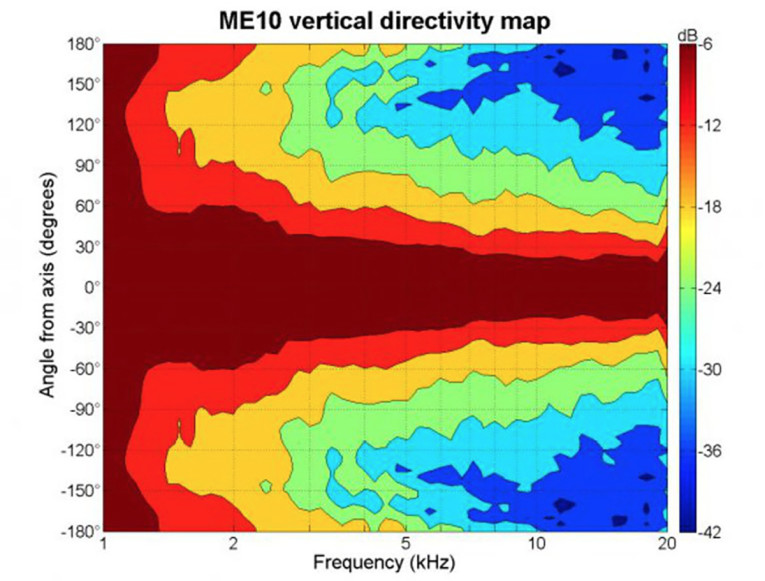
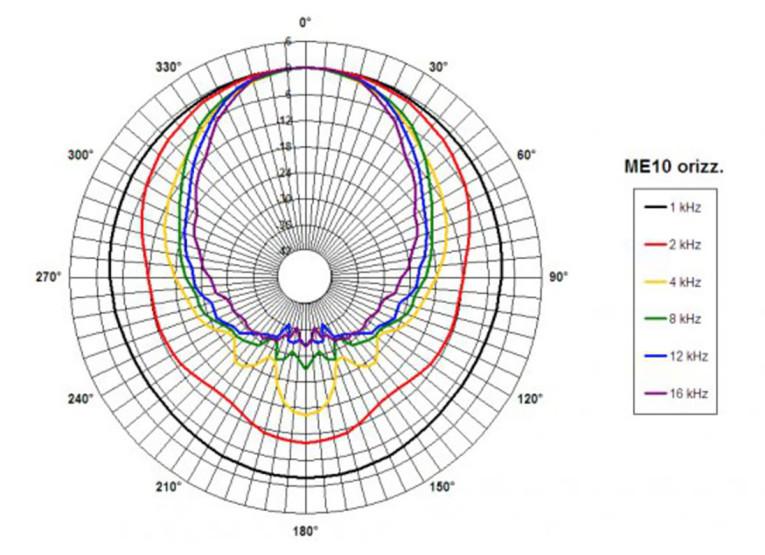
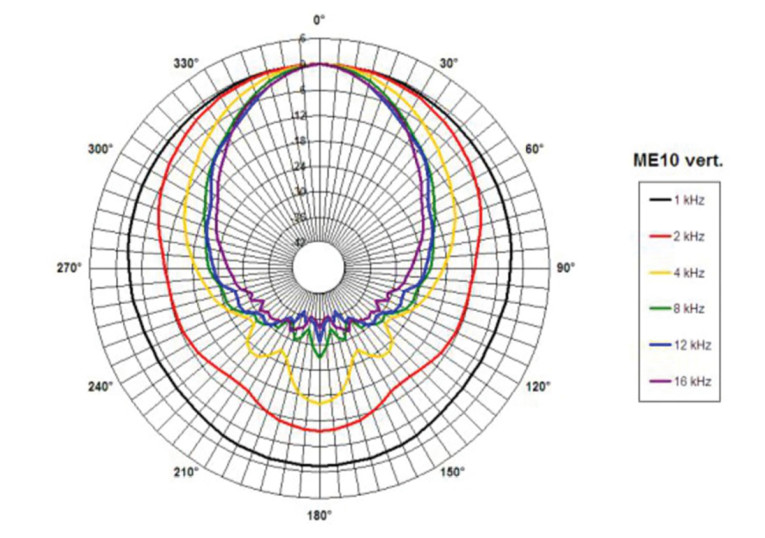
Testing began using the LinearX LMS analyzer to produce the 300-point stepped sine wave impedance plot shown in Figure 5, with the solid black curve showing the B&C Speakers DE111-8 mounted on the ME10v2 horn and the dashed blue curve representing the compression driver without the horn. With a 6.22Ω DCR (Re), the minimum impedance of the DE111/ME10v2 was 6.9Ω and at 4kHz.
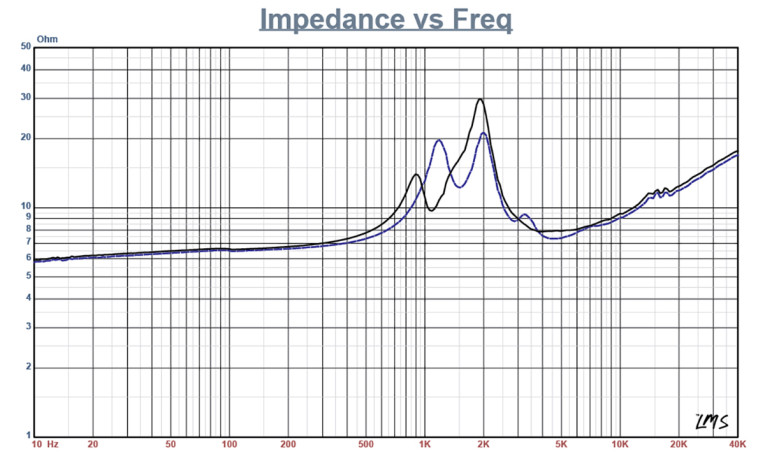
For the next set of SPL measurements, I free-air mounted the DE111/ME10v2 combination without an enclosure and measured the horizontal on- and off-axis at 2.83V/1m. I measured the on- and off-axis frequency response using the Loudsoft FINE R+D analyzer (provided to Voice Coil by Loudsoft) and the GRAS 46BE 1/4” microphone (courtesy of GRAS Sound & Vibration). The equipment was set up to measure the 200Hz to 40kHz frequency response (using a 192kHz sampling rate) at 2V/0.5m normalized to 2.83V/1m. Sweeps were performed at 0°, 15°, 30°, 45°, and 60° off-axis. Note, since B&C Speakers supplied the directivity maps and polar plots for the ME10v2, I chose not to do the vertical SPL measurements, but will show both the horizontal and vertical polar plots using the CLIO Pocket Analyzer.
Figure 6 illustrates the on-axis frequency response of the compression driver/horn combination, which is smooth with no major anomalies with a declining response as frequency increases above 4.5kHz, and extending to somewhat beyond 17kHz, requiring the usual horn equalization.

Figure 7 depicts the on- and off-axis response in the horizontal plane. Figure 8 displays the normalized horizontal plane response. Figure 9 shows the CLIO Pocket analyzer-generated the 180° horizontal polar plot (in 10° increments with 1/3 octave smoothing applied). Figure 10 shows the vertical polar plot. Last, Figure 11 illustrates the two-sample SPL comparison showing the two B&C Speakers DE111-8 compression driver samples to be very closely matched ≤ 1dB throughout the operating range of the transducer.
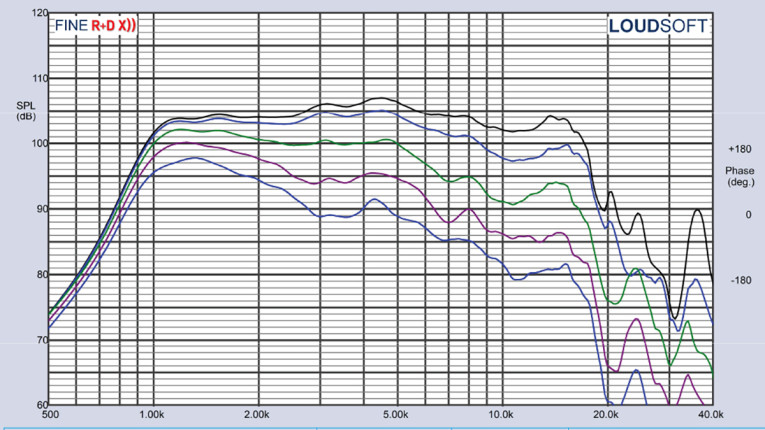


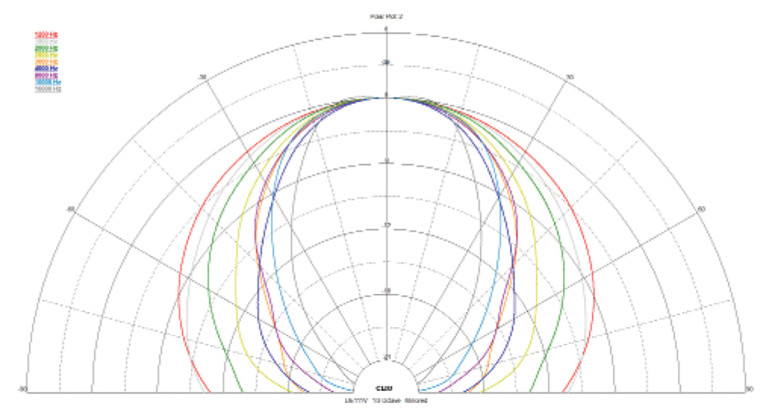
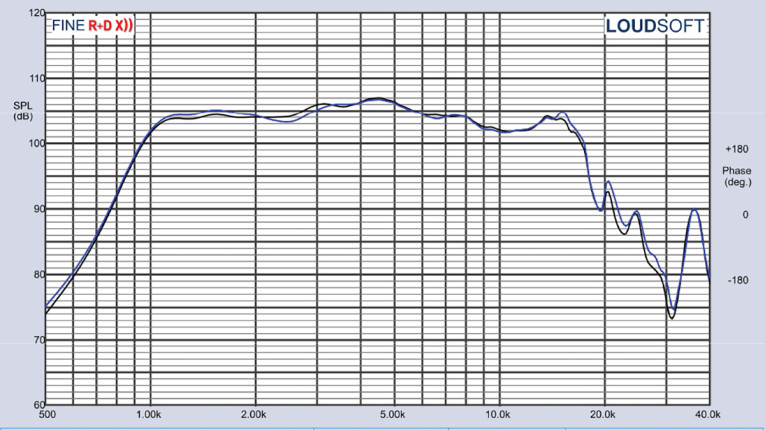
I then set up the Listen AudioConnect analyzer, SoundCheck 20 software, and the Listen 1/4” SCM microphone to measure distortion and generate time-frequency plots (courtesy of Listen, Inc.). For the distortion measurement, I again mounted the DE111/ME10v2 combination in free-air in the same manner as was used for the frequency response measurements, and set the SPL to 104dB at 1m (2.49V determined by using a pink noise stimulus generator and internal SLM in the SC20 SoundCheck software). Then, I measured the distortion with the Listen 1/4” measurement microphone located 10cm from the mouth of the horn. This produced the distortion curves shown in Figure 12 (the red curve=second harmonic, and the blue curve=third harmonic).

Following this test sequence, I then set up SoundCheck 20 to generate a 2.83V/1m impulse response for this driver/horn combination and imported the data into Listen’s SoundMap Time/Frequency software. Figure 13 shows the resulting cumulatvie spectral decay (CSD) waterfall plot. Figure 14 shows the Short Time Fourier Transform (STFT) plot.
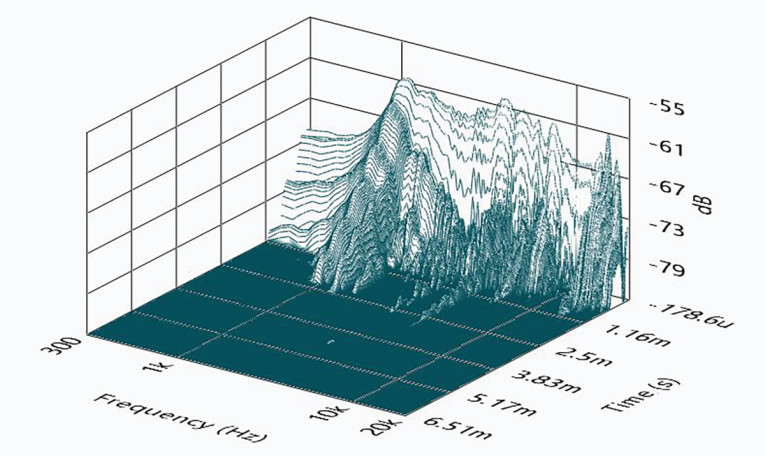
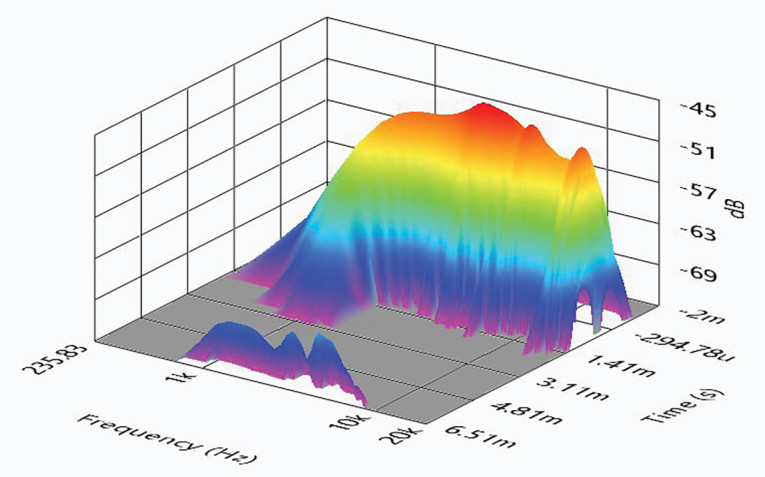
From the above measurements, the compact DE111 displays excellent performance for such a small package, and is a nice addition to B&C Speakers’ extensive lineup of neo motor 1” compression drivers.
For more information, contact B&C Speakers N.A., National U.S. Sales Office, 220 W. Parkway, Unit 11, Pompton Plains, NJ 07444; call (973) 248-0955; e-mail Bennett Prescott; or visit the B&C Speakers’ website at www.bcspeakers.com.
This article was originally published in Voice Coil, August 2022
For information about how to submit samples to Vance Dickason for Test Bench, check out the instructions here.





